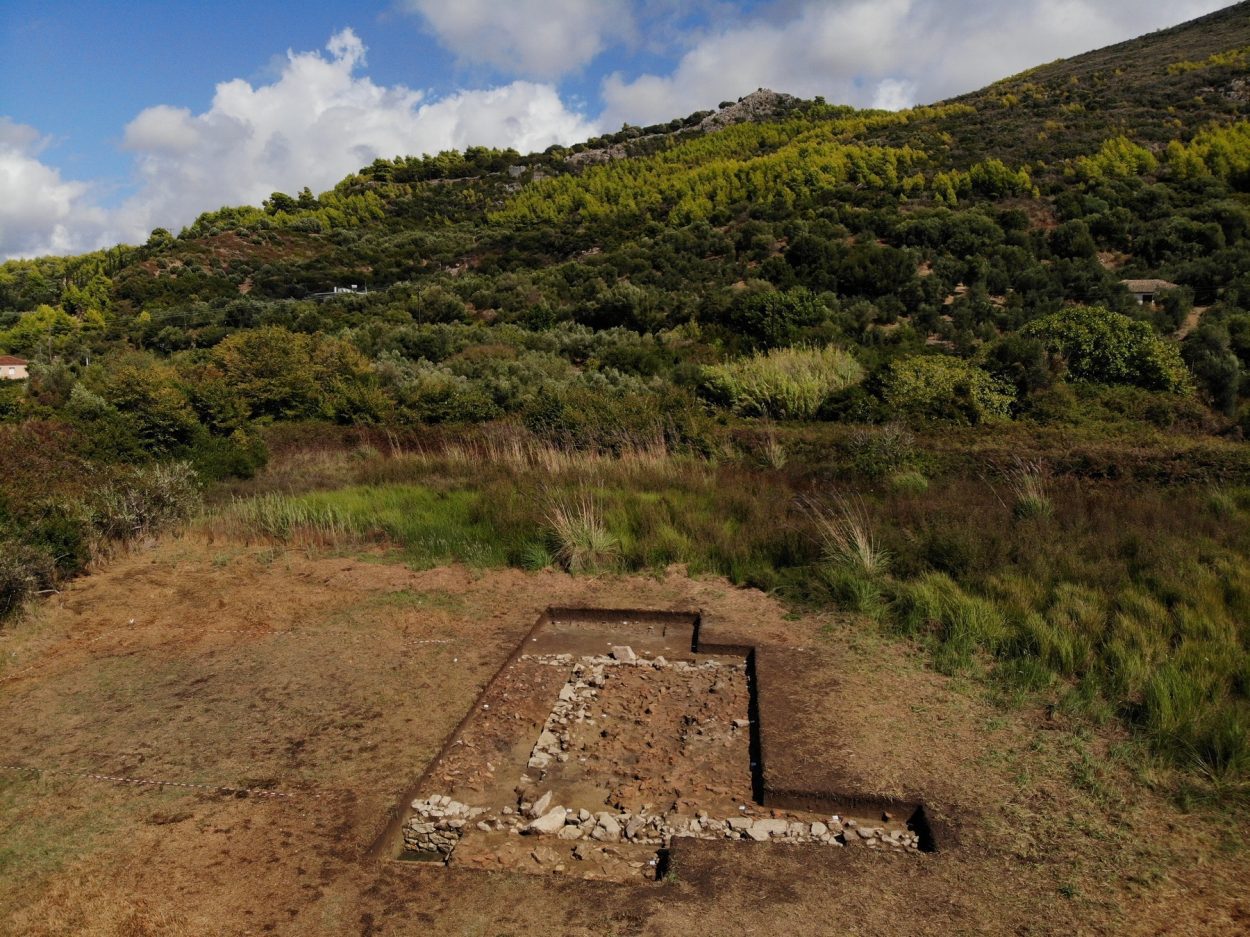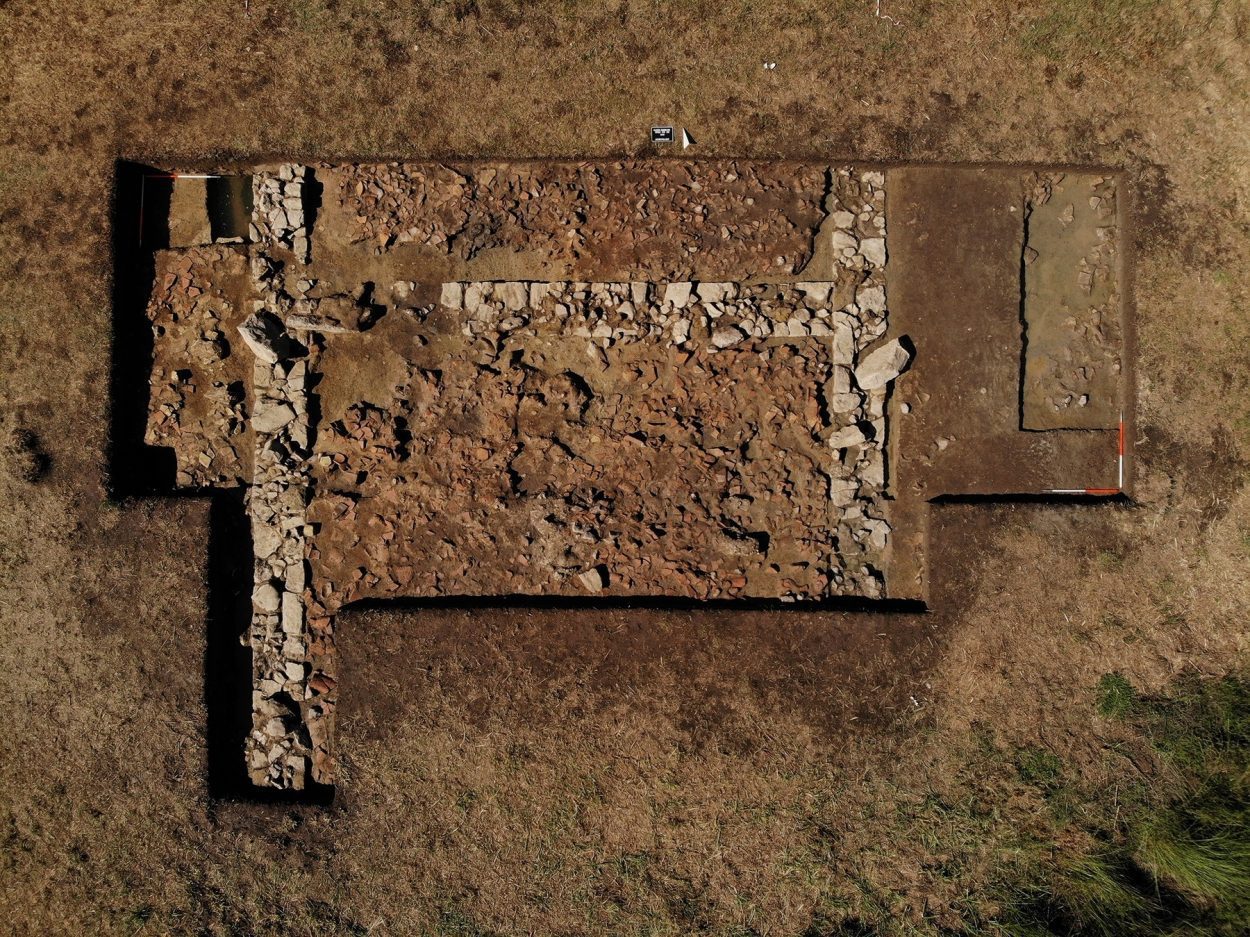A multinational team of archaeologists may have uncovered the sanctuary of Samian Poseidon during excavations in the foothills at the ancient acropolis of Samicum in Greece.
Samicum, also called Samikon, was an ancient city during the middle and late Helladic periods, located in the Peloponnese at Kleidi Hill near Kato Samiko, half-way between the mouths of the Alpheius and the Neda.
According to ancient texts, near the city was a celebrated temple of the Samian Poseidon, in which Strabo describes in his Geographica: “Then comes the mountain of Triphylia that sees Macistia from Pisatis; then another river called Chalcis, and a spring called Cruni, and a settlement called Chalcis, and, after these, Samicum, where is the most highly revered temple of the Samian Poseidon. About the temple is a sacred precinct full of wild olive-trees. The people of Macistum used to have charge over it; and it was they, too, who used to proclaim the armistice-day called “Samian.” But all the Triphylians contribute to the maintenance of the temple”.
A possible site of the temple was suggested following ongoing investigations conducting geophysical surveys in 2017, 2018 and 2021. Now, as part of a five-year research program expected to last until 2026, excavations have located a temple-shaped building in the foothills near the city.

Archaeologists found the foundations of a large building measuring 9.4 metres in width, which combined with earlier geophysical data suggests that the entire structure is up to 28 metres in length.
At one end the team has identified a “pronaos” (a vestibule at the front enclosed by a portico and projecting side walls) – an architectural feature typical of Greek temples, in addition to two inner rooms (one being a “cella”) in which the researchers found a dense layer of tiles.
Also uncovered was a marble basin often associated with a cultic use, and fragments of a laconic roof which dates to the Archaic period.
Greek Ministry of Culture & Sports
Header Image Credit : ΥΠΠΟΑ





